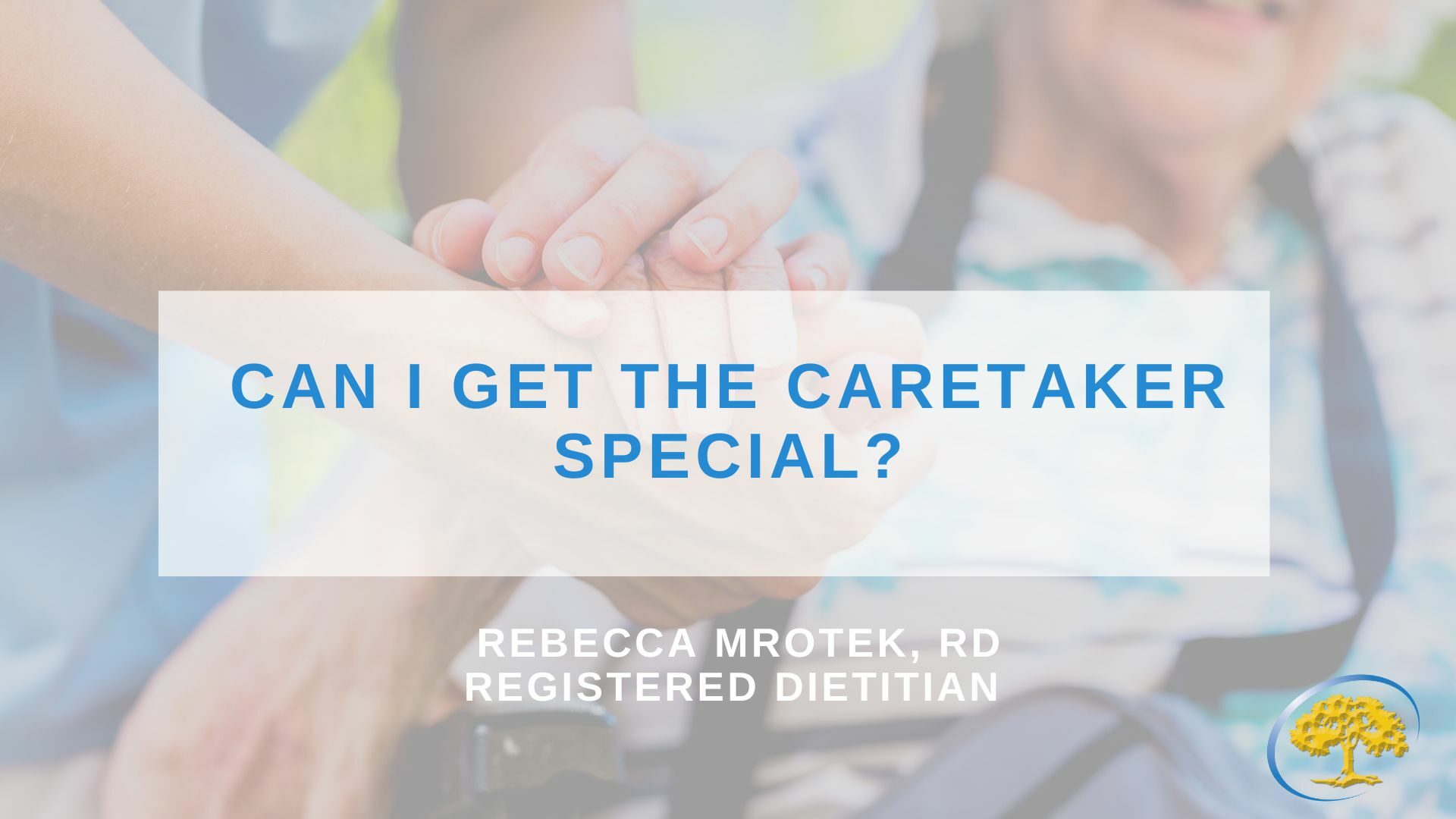
Posted 2 years ago
Can I get the Caretaker Special?
Let’s set the scene. Your loved one comes home and is nauseous, fatigued, and hasn’t eaten anything all day. You want to help, so you whip up their favorite dish and serve it to them. They take two bites and say “I’m not hungry” or “this tastes awful”. It is hard enough dealing with the schedules, the side effects, and the worry that comes with taking care of a loved one with cancer; but, when you can’t show your love and support through food, it can be disheartening.
During the month of November, we celebrate everything that you all do to remind you that you are enough and you are doing enough. Trying to figure out what foods to serve from day-to-day can be daunting. Hopefully, these tips will help alleviate some stress surrounding food to help you and your loved one nourish your mind, body, and spirit.
Lean on others
A support system is just that, a system. Not one person. Reach out to family, friends, religious groups, and other programs that can help make meals or do other household chores. Those extra hands can take the pressure off you.
Use meal service companies
We live in 2022- a time of fast-paced lifestyles and convenience accommodations. There are many different options for meal preparations, meal delivery services, and grocery delivery or store-pick up. Utilize these time savers to give you more minutes throughout the day.
Use quick cooking methods
The best quick cooking tools are the microwave and the air fryer. Find meals that do not take much prep work and that can be thrown into the air fryer. Frozen and canned foods provide plenty of vitamins and minerals and are easy additions to any meal.
Communicate

Try new things
Similar to foods once loved tasting bad, foods that were once bad may taste good. Think outside of the box and try new flavors. If Indian food was never a favorite, try it again. Especially if your loved one is experiencing lack of flavor, a strong flavored dish could be the trick to tasting food.
If weight loss occurs during active treatment, do not restrict foods
This can be counterintuitive for people as we want to give the body the most nutritious foods after being diagnosed with cancer. The body needs more calories and protein while going through radiation and/or chemotherapy. Sometimes, the best foods may not be nuts and berries, but a steak with garlic mashed potatoes with a side of milkshake. If weight loss occurs, that means the body is not getting enough nutrition to support their energy needs. This is not the time to do cleanses, restrict all sugar, or start an extremely restrictive diet. Fat is not metabolically active- therefore, protein is as important as calories to maintain muscle mass and support your bodies energy needs. Those who can maintain their nutrition status have better outcomes, decreased risk of hospitalization, and better compliance to treatment.
Here are some easy, snack and meal ideas to prep and have easily available in your kitchen:
Egg Frittata
12 eggs
3 tablespoons full-fat dairy (heavy cream, half-and-half, whole milk, sour cream, crème fraîche or yogurt)
1/2 teaspoon salt
1 cup (4 ounces) grated or crumbled cheese
3 to 5 cups chopped vegetables or greens of choice (or up to 3 cups leftover cooked vegetables or greens)
1 tablespoon olive oil
Garnish: Chopped or torn fresh, leafy herbs (basil, parsley, cilantro, or dill)
Instructions
Preheat the oven to 425 degrees Fahrenheit for the traditional stovetop method, or 350 degrees for the baked methods (casserole or mini/muffins).
Crack the eggs into a medium mixing bowl. Add your dairy of choice and the salt. Whisk just until the egg yolks and whites are blended. Whisk in all or half of the cheese (you can reserve the other half for topping the frittata before baking, if desired). Set the mixture aside.
In a 12-inch cast iron skillet (or any other large skillet that’s oven safe), warm the olive oil over medium heat until shimmering. Add the vegetables, starting with chopped onions or other dense vegetables. Cook for a few minutes, stirring occasionally, then add any softer vegetables such as zucchini. Cook until those vegetables are tender, then add any garlic or greens, and cook until fragrant or wilted. Season with salt, to taste.
Traditional stovetop option:Whisk the eggs once more and pour the mixture over the vegetables. Stir with a spatula briefly to combine and distribute the mixture evenly across the pan. If you reserved any cheese, sprinkle it on top of the frittata now.
Once the outside edge of the frittata turns lighter in color (about 30 seconds to 1 minute), carefully transfer the frittata to the oven. Bake for 7 to 14 minutes (keep an eye on it), until the eggs are puffed and appear cooked, and the center of the frittata jiggles just a bit when you give it a gentle shimmy. Remove the frittata from the oven and place it on a cooling rack to cool. Garnish with herbs, slice with a sharp knife, and serve.
Baked casserole option:Let the cooked vegetables cool for a few minutes. In the meantime, grease a 9 by 13-inch pan with butter, which works better than cooking spray. Stir the lightly cooled veggies into the egg mixture, then pour it all into the pan. If you reserved any cheese, sprinkle it on top of the frittata now.
Bake for 20 to 25 minutes (keep an eye on it), until the eggs are puffed and appear cooked, and the center of the frittata jiggles just a bit when you give it a gentle shimmy. Remove the frittata from the oven and place it on a cooling rack to cool. Garnish with herbs, slice with a sharp knife, and serve.
1/8th slice has 220 calories, 15 g pro
Recipe from Cookie and Kate: https://cookieandkate.com/best-frittata-recipe/
Peanut Butter Yogurt Parfait
Ingredients
2 tablespoons natural creamy peanut butter
1 cup low-fat plain Greek yogurt
½ medium banana, sliced
¼ cup corn flakes cereal
Instructions
In a small microwave-safe dish, microwave peanut butter until thin and easy to pour, about 10 to 20 seconds.
Spoon ½ cup yogurt into a bowl or air-tight container. Arrange half of the sliced banana over yogurt. Drizzle half of the melted peanut butter over banana. Sprinkle 2 tablespoons cereal over peanut butter. Layer remaining yogurt, banana, peanut butter, and cereal.
Serve immediately or chill. Parfait can be stored in an air-tight container up to three days in the refrigerator.
Recipe provides 450 calories, 33 g protein
Adapted from https://www.mskcc.org/experience/patient-support/nutrition-cancer/recipes/yogurt-parfait-banana-peanut-butter-and-corn-flakes
Cream Cheese Pesto Pasta
Ingredients
2 cups fusilli
6 tablespoons cream cheese, softened
3 to 4 tablespoons pesto sauce
¼ cup grated Parmesan
Fresh parsley, chopped
Roasted sunflower seeds
Instructions
Cook pasta according to package directions. Reserve about ½ cup cooking liquid, then drain.
Whisk cream cheese with pesto and about 6 tablespoons reserved cooking liquid until creamy. Adding more water will produce thinner sauce and less water will produce thicker sauce. Pour sauce over pasta and toss to combine.
Top with Parmesan. Add parsley and sunflower seeds to taste, and serve immediately. Pasta should register 145 degrees Fahrenheit or higher using an instant-read thermometer placed in the middle of the dish.
¼ of recipe contains 330 calories, 14 g pro
Adapted from https://www.mskcc.org/experience/patient-support/nutrition-cancer/recipes/cream-cheese-pesto-pasta

